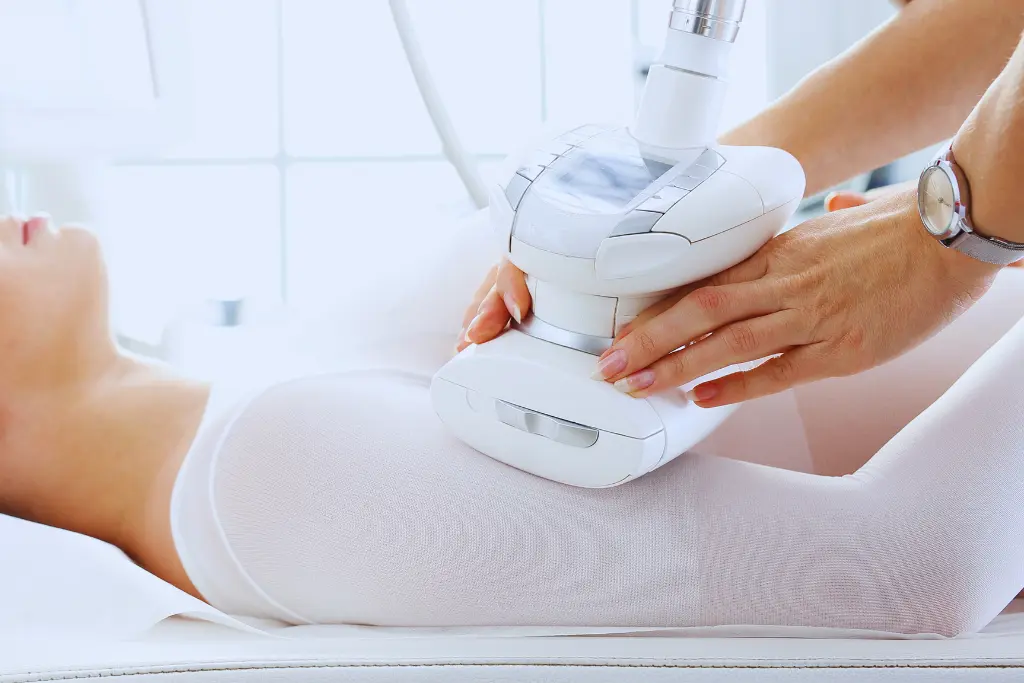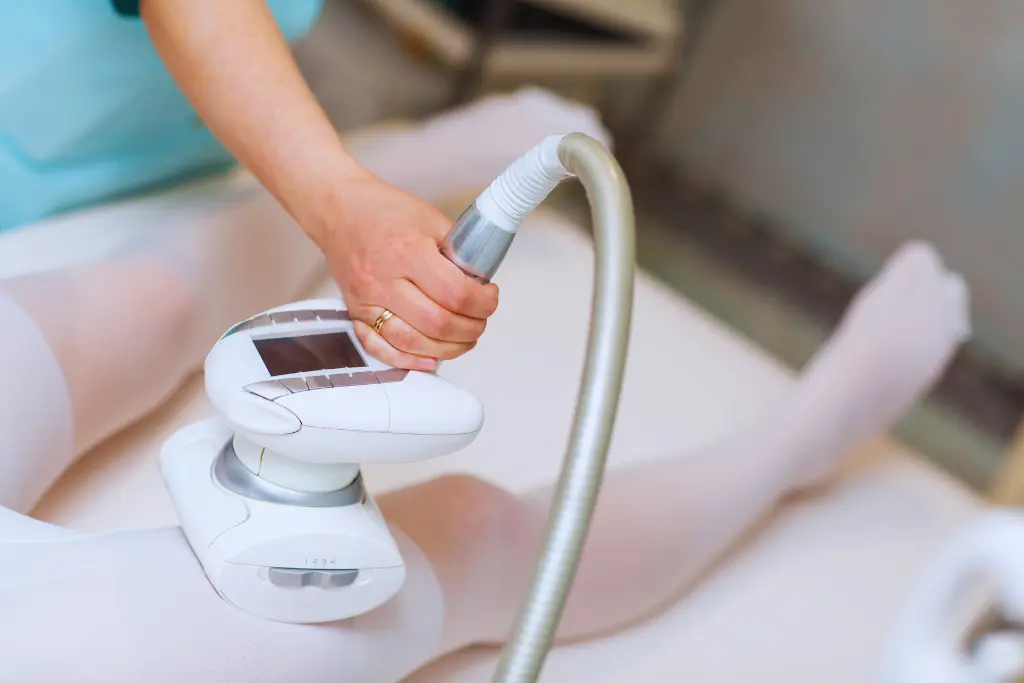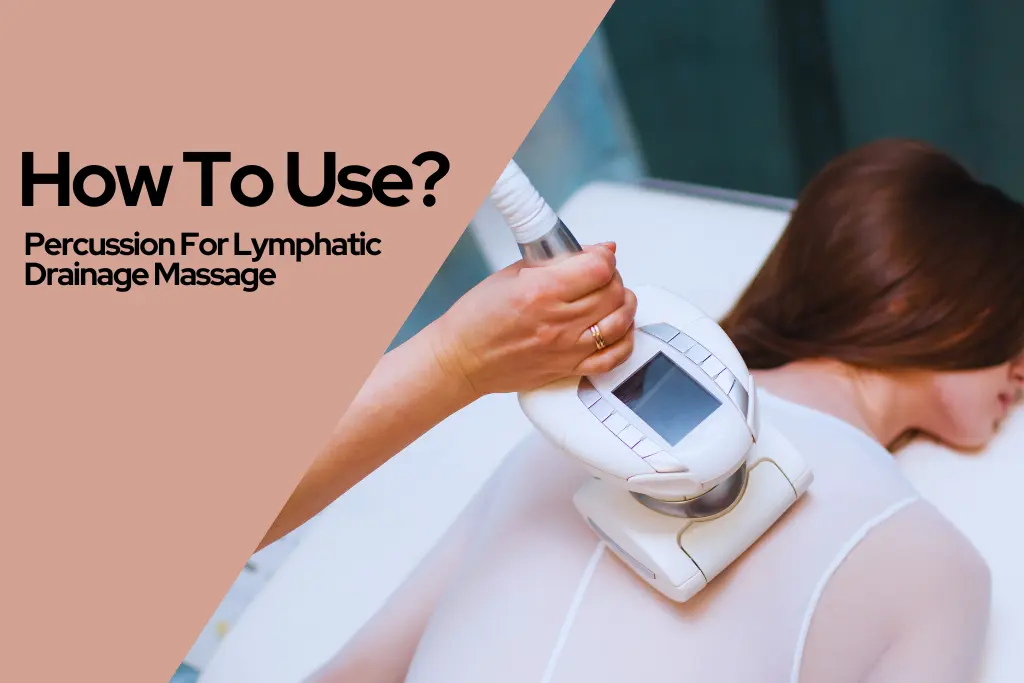Have you ever felt like you want to detox your body quickly? The best kind of massages clear lymph. This soft technique promotes lymphatic drainage to rid your cells of waste and bolster your immune system. But what if you could blast through this process? Enter percussion therapy!
But use a pounding tool to elevate your lymphatic drainage massage. We will break down the science of both, show you how they aid you, and then help you choose the right gadget to drum with. Afterward, it will guide you through giving yourself a percussion-assisted lymphatic drainage massage in a step-by-step process, with tips on targeting specific areas. But safety first! You can also think about important things to consider and what not to do.
Now, we’re going to show you how to maximize this potent practice and integrate it into your life naturally. Now, are you ready to refresh yourself one beat at a time? Sound familiar — or, let me say, sound interesting? If yes, then we shall get into the article!
What is percussion massage, and how does it work?
Percussion massage employs fast, repetitive tapping strokes to activate muscles and tissues and aid blood flow, muscle relaxation, and, most essential, lymphatic drainage. Massage guns and similar percussion tools work by supplying shallow, fast pulses to decompress tension and enhance fluid flow, especially in areas that are poorly perfused.
How Percussion Works for Lymphatic Drainage:
- Stimulation of the lymphatic vessels: Percussion will promote the contraction of these vessels, enabling the flow of fluid waste through the lymphatic system.
- Increased blood flow: The regular tapping promotes blood flow, which may decrease fluid retention and assist with recovery.
- Toxin removal: Percussion therapy improves the flow of lymph, which helps to eliminate waste products from the body better.
What Are the Benefits of Using Percussion for Lymphatic Drainage?
Percussive therapy for lymphatic drainage marries the strengths of each technique for a new approach to optimizing health and body systems. Below are a few of the biggest percussive massage benefits for assisting in lymphatic drainage:
Better Circulation of Lymph
Percussion treatment uses short, rapid movements to promote movement in the lymphatic system. This is especially crucial, as the lymphatic system does not have a pump — like the heart — to propel lymph. Percussion also mimics the pumping action that moves lymph fluid throughout the body.
Less Swelling and Edema
Because percussion treatment encourages lymphatic circulation, it may lower edema and swelling buildup caused by pooling of fluids. This tool is particularly useful for those recovering from surgery, injured athletes or those suffering from any medical condition that leads to water retention.
Faster Removal of Toxins
Quick movement of lymphatic fluid causes the body to clear out waste and toxins more quickly. Percussion therapy enhances lymph circulation, facilitating better detoxification and having a favorable impact on overall health and wellness.
Better Immune System Function
Without the lymphatic system, the defense system cannot function. One way percussion may be beneficial to the immune system is through lymph circulation, which consists of white blood cells. This aids the body in fighting germs and recovering from illness.
Relief From Sore And Tense Muscles
Percussion therapy is primarily beneficial to the lymphatic system, but it also provides additional solutions to muscle tightness and discomfort. It also works on the lymphatic muscles, and thus, it is a good option for complete physical treatment and acts on two fronts together.
Better Recovery After Doing Physical Activities
The combination of lymphatic drainage and percussion treatment is often utilized by athletes or those who engage in regular exercise to help eliminate stubborn lymphatic fluid that can take weeks to drain away from vigorous exercise, allowing for quicker recovery times and more effective workouts.
Deeper Relaxation and Better Health
Tapping your body consistently is part of percussion therapy; it can be good for your health and make you feel relaxed. Reduced stress, in turn, can nourish the lymphatic system indirectly since stress can negatively impact both lymph flow and immune function overall.

How Can You Use a Massage Gun Effectively for Lymphatic Drainage?
Massage guns are one of the most common percussion instruments used for lymphatic drainage. They have adjustable speeds, come with a range of attachments, and let you isolate different parts of your body for extra benefit.
How to Use a Massage Gun for Lymphatic Drainage:
- Adjust Speed: Use a slower speed to avoid discomfort in especially sensitive areas.
- Use Light Attachments: Choose Soft, Flat Attachments To Prevent Excessive Pressure
- Focus on Lymphatic Areas: Pay attention to lymph nodes, which have locations in the neck, armpits and pelvis – groin regions.
- Move Slowly: Since you want the gun to go gently in your body and you need the movement to be fluid by giving slow pulses of rhythm,
- Avoid Overuse: Do not spend too much time in a single area to avoid overstimulation.
What Are the Different Types of Percussion Devices for Lymphatic Drainage?
Percussion devices lie somewhere between gentle stretching and heavy-duty massagers. And now, here are some of the best lymphatic drainage percussion massagers and massage guns.
Top Percussion Devices for Lymphatic Drainage:
| Device | Features | Best For |
| Theragun | Adjustable speeds, ergonomic design | Deep tissue massage, lymph nodes |
| Flow Recovery | Adjustable percussive intensity, quiet motor | Targeting swollen areas |
| Dr. Serenity Drum | Circular motion, soft percussion | Sensitive areas like the neck |
| Hypervolt | Quiet operation, versatile attachments | Full-body lymphatic drainage |
Best Massage Guns for Lymphatic Drainage:
- Theragun Elite: Great power, great features, including customizable power settings, suitable for precision lymphatic drainage.
- Hypervolt 2: A bit quieter, multiple attachments, ideal for not bothering lymph nodes.
- TimTam Power Massager: Good for someone who requires powerful, deep percussion to expand blood flow and lymph fluid.
How Do You Choose the Right Percussion Tool for Lymphatic Drainage?
Percussion for lymphatic flow is generally a no-no, but it might help you relax, it might help you circulate, and circulation is good for the lymphatic system (in a roundabout way, of course). If you’re planning to use one, it’s important to choose the best percussion option for you, however.
A few things to ponder:
- Material: The firmness and feel of different fabrics are different. Most people choose wood, rubber, or plastic. A strong, deep percussion sound can come from wooden tools, while a softer sound may come from rubber or plastic tools.
- Size and Shape: Tools come in a range of sizes, from small mallets that you can hold in your hand to bigger ones with wider areas. Smaller tools are better for getting precise work done, while bigger tools can reach more ground. Shapes that are curvy or dome-shaped can fit the body better.
- Manual vs. Electric: With a manual percussion tool, you have to tap it, but with an electric type, it does it for you. Electric tools work best on bigger areas or when you need to hit something harder.
- Adjustability: Look for tools that let you change the level of strength, like air percussion devices that let you change the speed and pressure. This lets you make changes for different parts of your body.
- Ergonomic Design: Pick tools with handles that won’t slip so you can keep control while you use them. Wider handles spread the force of the grip across your hand.
- Level of Noise: If noise is a problem, choose tools with quieter systems or softer materials, like ones with foam tips.
- Portability: Small folded models or light handheld ones work well for travel.
Consider what kind of massage you want, how intense you want it to be, how strong your grip is, and your cash. Start slowly until you know how the rhythmic tool makes your body feel. Lymphatic drainage can be done well if you have the right tool.

Safety Considerations and Contraindications
Lymphatic drainage massage is a gentle method used to improve lymphatic system movement and help the body get rid of toxins more efficiently. Even though it has many benefits, there are some things you should know about safety and when not to use it:
Safety Considerations
- Gentle Technique: Lymphatic drainage should always be performed with a soft hand. Just under the skin are lymphatic arteries. Apply enough pressure, and they will break. Rather than moving lymph, this stops the flow.
- Qualified Practitioner: It is a must to get treated by a qualified lymphatic drainage therapist. Not only are these therapists well versed in the lymphatic system, but they can also tailor-make the massage to you.
- Hydration: Drinking lots of water before and after a lymphatic drainage practice will assist the lymph in moving more freely as well as eliminating the toxins released during the massage.
- Frequency and Duration: Sessions need to be appropriately spaced and not take long enough that the lymphatic system becomes overstimulated and fatigued, or other issues will arise.
Contraindications
Massage for lymphatic flow isn’t appropriate for everyone, and there are certain times when you should skip it altogether or only use it under your physician’s guidance:
- Acute Infections: This massage should never be given to a person with acute infections, especially those causing fever, as it may sweep the infection from the area into the body.
- Heart Problems: Patients with pre-existing heart disease or heart failure should use caution, as increasing fluid movement can stress an already stressed heart.
- Kidney Issues: Lymphatic drainage should be avoided by those with severe renal dysfunction or kidney disease, as this technique puts additional strain on the kidneys and may lead to problems.
- Active Cancer: Those with active cancers, particularly lymphomas or any other malignancy involving the lymphatic system, should not receive lymphatic drainage without medical clearance.
- Deep vein thrombosis (DVT): If you previously had or currently have a deep vein thrombosis (DVT), do not undergo this therapy, as it may dislodge a clot and will cause pulmonary embolism.
- Asthma: Those with asthma should consult their physician before getting lymphatic drainage, because changes in fluid levels and pressure could stimulate an attack.
- Pregnancy: Lymphatic drainage can alter blood flow, so it is best for pregnant women to discuss this with their doctor first.
How Can You Maximize Results with Percussion Lymphatic Drainage?
For optimal results of percussion therapy for lymphatic drainage, you would have to follow the ideal dosages, use the correct technique, exercise regularly, and adopt a lifestyle to complement the therapy. Here are some ways to increase the effectiveness of percussion treatment for lymphatic drainage:
- Correct Technique: Use specific percussion moves and pressure for each area. For example, tap more softly on sensitive regions like the neck but beat on bigger muscle groups.
- Follow Lymphatic Pathways: Move in the direction that lymphatic flow travels, toward the center of the body. Massage strokes should always be ‘from center to center,’ draining fluid towards the nodes.
- Focus on Lymph Node Areas: Target areas abundant in lymph nodes, such as the neck, groin, and abdomen, to support lymphatic drainage.
- Use Different Types of Strokes: To encourage fluids to move, alternate between percussion strokes and more gentle lymphatic drainage strokes or circles.
- Stay Hydrated: Be sure to hydrate pre- and post-sessions to promote the flow of lymph fluid and ensure waste and toxins are expelled from the body.
- Use the Right Pressure: Not applying sufficient pressure isn’t beneficial, but utilizing too much pressure could injure the veins. Locate the hot zone in a state where you are challenged but not harmed.
- Exercise After: To encourage movement of the lymph that was released, light exercise (like a walk) is performed to help move this lymph through the veins.
- Take Deep Breaths: Deep belly breathing enhances the circulation of lymph by pumping it through the diaphragm.
- Consider Professional Help: Think about getting professional help. If you have a difficult condition like lymphedema, talk to a trained lymphatic drainage therapist.
How Can You Incorporate Percussion Massage Into Your Routine?
Percussion massage isn’t a direct path to better drainage, but it can help! Focus on larger muscles with light pressure to potentially boost circulation, which might indirectly benefit your lymphatic system.
Think of it as a warm-up before a professional MLD treatment, or use it for post-workout recovery to ease muscle tightness that could be hindering lymph flow. Remember, it complements, not replaces, MLD from a trained therapist. Consult your doctor before using percussion if you have any health concerns.
Conclusion
Introducing percussion therapy as a part of your lymphatic drainage session makes it easy for your body to pierce through toxins and strives to improve health. To improve how your lymphatic system works, you have to know how to do lymphatic drainage and percussion treatment; you have to choose the right instrument and use procedures that are safe and effective.
Frequently Asked Questions (FAQs) About Percussion for Lymphatic Drainage
How does lymphatic massage help with lymphatic drainage?
Manual lymph drainage promotes lymphatic fluid flow; movement of lymphatic fluid helps circulation of swells, removal of toxins, and vital function of tissues. Lymphatic drainage massage is useful for detoxification and the circulatory system. Whereas normal massage is about relaxing your muscles, lymphatic massage is about stimulating the lymph vessels to allow for better flow of the lymph in your body and improving immunity. For professional-level treatment that imitates many individual techniques, tools such as a massage gun or Theragun for lymphatic drainage can provide for home use.
How does a Theragun help with lymphatic drainage?
Using a Theragun, you can promote lymphatic flow by percussing gentle plates targeting hydrostasis or build a series of percussion and vibration therapy at specific lymphatic regions across the body. Percussive hops from the Theragun percussion hit soft tissue around lymph nodes to move this lymph fluid along. Specific areas are even better with the concentration of lymph nodes in regions like the neck, armpits, and groin, so targeting all of those areas with the Theragun for lymphatic drainage is especially effective. With its amplitude and speed, the Theragun lymphatic drainage setting better encourages fluid exchange in the circulatory systems to help facilitate lymphatic drainage for those who are recovering from surgery or experiencing swelling.
Can a massage gun be used for full-body lymphatic drainage?
Yes, a massage gun encourages a more thorough lymphatic stimulation targeting lymph nodes all over the body, including behind the knee, above the elbow, below the jaw, under the armpit, in the groin, and in the abdomen. It is important to use the right massage gun head on the right body part to have the proper pressure and lymph drainage results. With a Theragun Pro (or other professional-level treatment device) set to take literally as many forces per moment and weight as you need, even your own Theragun treatment can be customized.
What is the best way to use a Theragun for lymphatic drainage?
The best way to use a Theragun for lymphatic drainage is to use a soft attachment or massage head for gentle percussion. Starting from the collarbone, considering this is a major area for lymphatic flow and moving onto other areas that are rich in the lymphatic system, which are the neck, armpits and groin. Even assist with a light press if it cannot be comfortable to keep up. Keep the device moving slowly and steadily to encourage optimum movement of the lymph fluid, and do not press too hard as to create pain. A general guideline is that a Theragun lymphatic drainage session should take 5 to 15 minutes per region. Drink plenty of water before and after the session to aid detoxification.
How can vibration therapy and percussion massage gun treatments support lymphatic stimulation?
Vibration therapy and percussion massage gun treatments act on the muscles and surrounding soft tissue, providing a stimulus for lymphatic fluid movement through the surrounding tissue. If you’re looking to reduce swelling before a big day, the light vibrations of a massage gun or Theragun percussion massage can increase circulation, decreasing swelling and supporting your body’s detox via the lymphatic system. This technique is ideal for those with delayed onset muscle soreness or post-surgical recovery, as it has a tendency to promote quick recovery by supporting functional tissue recreation and lowering inflammation.

